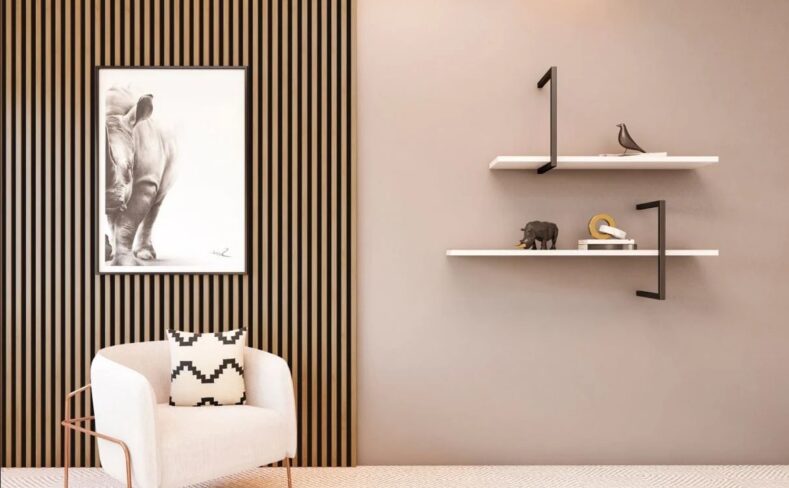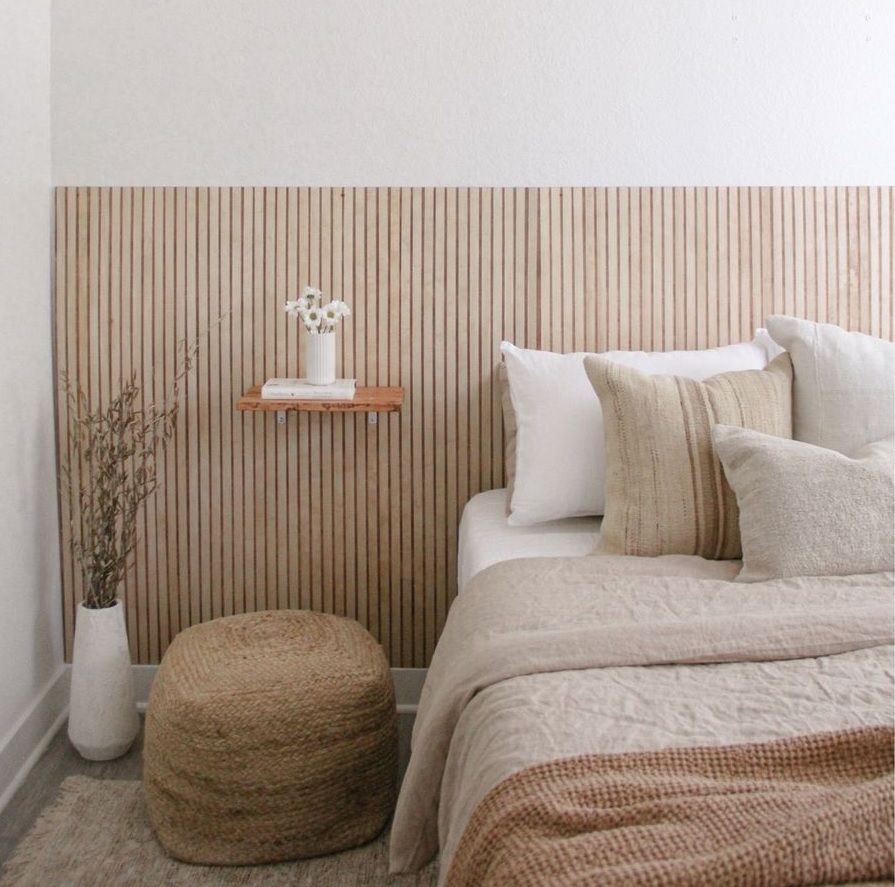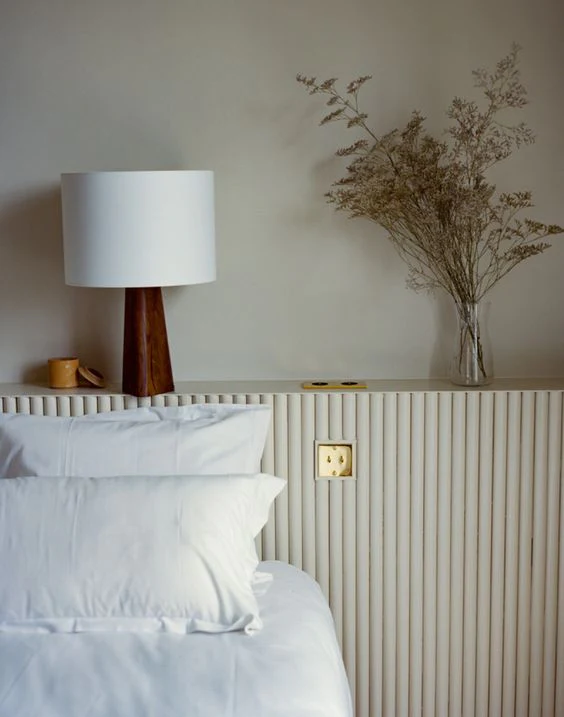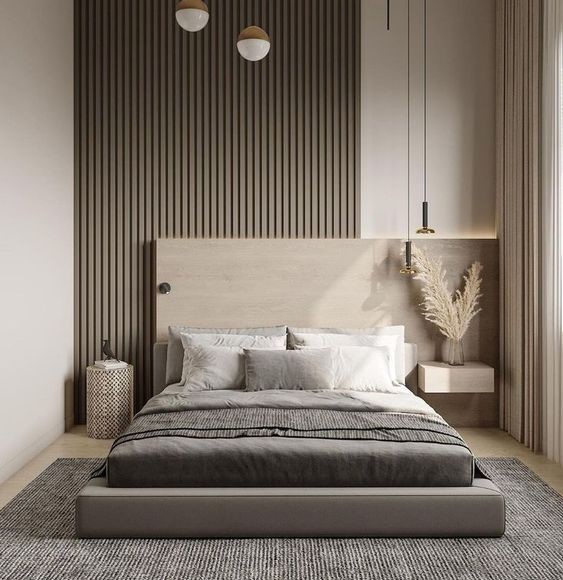
PVC Wall Panel: Beautiful and Functional Interior Decoration
With the continuous development of modern architecture and interior design trends, more and more people are looking for innovative, functional and beautiful interior decoration materials. In this era, PVC wall panels have attracted widespread attention as a multifunctional wall decoration material. It stands out from the traditional wall panels and other decorative materials, and becomes the new favorite of fashionable home.
This article gives you a detailed introduction to the characteristics, advantages and disadvantages of PVC wall panels, the manufacturing process, and answers to some common questions about PVC wall panels.
Related Articles
MDF Wall Panels vs WPC Wall Panels: Which is Better?
Best Wall Panel Designs to Decorate Plain Walls in 2023
I. Introduction of PVC wall panel
PVC stands for polyvinyl chloride. It is a widely used plastic material from which most pipes and irrigation pipes are made.
PVC wall panel is a kind of interior decoration material, which is a wall panel material made of polyvinyl chloride (PVC) resin and other additives. It is also known as PVC panel or PVC decorative board. PVC wall panels are widely used as cladding material for walls and ceilings. They are versatile and can be used as an alternative to mineral fiber materials such as gypsum or POP. They can replace wall tiles in bathrooms and can also be used as decorative wall panels instead of materials such as MDF or wallpaper. So if you’re looking for an alternative to these traditional materials, find out if PVC walls and ceilings are the right choice.
PVC wall panels are usually used to decorate interior walls, especially for areas with damp or high humidity, such as bathrooms, kitchens, laundry rooms, etc. This is because the PVC material itself is resistant to water, moisture and mildew, making it very practical in these areas.
PVC wall panels are hollow items used for interior wall cladding and ceilings. Due to their hollow parts, they are lighter in weight. They feature tongue-and-groove couplings for faster and easier installation. PVC wall panel is used as a finishing material in the interior of the home, similar to wallpaper.
PVC (polyvinyl chloride) ceilings are widely used as cladding material for ceilings in residential and commercial buildings. PVC is a strong, lightweight plastic material that is factory manufactured into ceilings in a variety of designs, colours, sizes and lengths; each panel has a hollow core and smooth, shiny surface. Since these panels are waterproof, they are an excellent alternative to traditional mineral fiber ceilings such as POP and plaster in wet areas such as balconies, bathrooms and basements. Here are the key facts to know.
PVC wall panels have some of the following features and advantages:
– Waterproof: PVC material does not absorb water, which can prevent the wall from getting damp and leaking.
– Easy to clean: PVC surface is smooth, easy to clean and maintain.
– Durable: PVC wall panels have a long service life and are not easy to wear and fade.
– Easy to install: PVC wall panels are relatively easy to install and can be fixed to the wall with adhesives or nails.
PVC wall panel is available in the market in a variety of colors, textures, and designs that can mimic wood grain, stone grain, and other decorative effects. This makes it a popular interior decoration option that can bring beauty and style to a room.
Generally speaking, PVC wall panels are a practical, economical and beautiful wall decoration material, especially suitable for areas that need to be waterproof and easy to clean.

II. The manufacturing process of PVC wall panel
PVC wall panel is made by mixing and processing polyvinyl chloride (PVC) resin with other additives. The following are the general steps in the production process of PVC wall panels:
1. Raw material preparation
First of all, PVC resin needs to be prepared as the main raw material. In addition, it may be necessary to add other chemical additives, such as stabilizers, plasticizers, fillers, pigments, etc., to improve the performance and appearance of PVC wall panels.
2. Material mixing
PVC resin and other additives are sent to a mixer or extruder for mixing. In this step, the additives are evenly dispersed in the PVC resin, ensuring the consistency and stability of the wall panel.
3. Extrusion molding
The mixed PVC resin is extruded into wall panels of specific shapes through an extruder. This is usually a continuous process, and the wall panel is produced continuously from the exit of the extruder, similar to extruded long strips.
4. Cooling and solidification
Extruded PVC wall panels go through a cooling process to make them solidify and stabilize. This can be done on a conveyor belt on which the wall panel is conveyed until fully cured.
5. Cutting and shaping
The extruded long strips of PVC wall panels are cut to the required length, shaped and trimmed to get the final wall panel product.
6. Surface treatment
Some PVC wall panels may require surface treatments such as printing, stickers, embossing, etc. to provide different textures and patterns.
7. Packaging and Shipping
Finally, the finished PVC wall panels are packed and ready to be shipped to the market or customers.
It should be noted that different manufacturers may adopt different production processes and formulations to meet the needs of different markets and customers. Therefore, the exact production process may vary. Overall, the process of making PVC siding is a relatively simple craft, making the material an affordable and popular interior finishing material.

III. Advantages and disadvantages of PVC wall panel
Advantages
1. Multiple options for appearance
– PVC wall panels usually come in a wide variety of colors, textures, and patterns that can mimic wood grain, stone grain, and other decorative effects. This makes it a very popular wall covering material that can add beauty and style to interior spaces.
– These panels can also be used as 3D panels to give walls a decorative look. PVC sheets are available in small sizes (seamlines are visible when installed) and large sizes, giving a seamless appearance to the overall design of the wall. It can also be cut to the desired size according to the wall area.
Note: PVC walls and ceilings may have a slight plastic look.
2. Lightweight and portable
– PVC ceiling is one of the lightest materials used for ceilings.
– PVC wall panels are a lightweight, strong and highly durable factory-made material.
– They are very easy to transport, handle and install on site without creating a dusty environment during installation.
3. Highly durable
The PVC wall panels are strong and very durable. They will last for years without warping or bending. Unlike gypsum and POP, PVC ceilings are not brittle and are less likely to be damaged during handling.
4. High water resistance
– PVC walls and ceilings are made of waterproof material which makes these panels highly waterproof.
– PVC wall panels are best suited for covering ceilings and walls in wet areas such as bathrooms, basements, garages, which are prone to moisture.
– Another advantage is that the panels are secured to each other with an interlocking system, preventing water from entering.
– Since PVC wall panels are moisture resistant, waterproof and non-absorbent, they keep out moisture and won’t breed mold.
5. Low maintenance cost
– PVC wall panels are easy to maintain and do not require any paints, varnishes or special coatings for routine maintenance.
– The PVC wall panels have a smooth surface and are very easy to clean. Everyday cleaning is just a quick wipe with a damp cloth or household cleaner to keep it looking like new.
– The polyurethane layer of these panels provides a smooth, flat surface to the boards, preventing dirt from accumulating.
– Another advantage is that PVC boards are highly resistant to sun fading due to the presence of non-yellowing agents such as titanium dioxide in their chemical composition.
6. Easy to install
– Installing PVC ceiling panels is easy as the panels can be cut and trimmed effortlessly. Additionally, they do not create a dusty environment during installation.
– Removal and reinstallation are easy as they feature tongue and groove joints.
– PVC wall panels are relatively easy to install and can be fixed to the wall with adhesives or nails. Due to its lightweight nature, the installation process does not require many specialized tools and skills, making it a favorite DIY (do-it-yourself) decorating option for many.
7. Budget friendly
– PVC wall panels and ceilings are affordable, budget-friendly, and recyclable.
– The best thing about PVC wall panels is that once installed, the wall or ceiling is ready to use and requires no painting or varnish.
– The PVC wall panels are secured with a tongue and groove system, ensuring quick and easy installation. So if a single panel is damaged, it can be replaced.
8. Flame retardancy
PVC wall panel is not easy to burn, and the ignition temperature of PVC is about 435°C.
Disadvantages
1. Has a plastic appearance
Internal and external PVC ceilings give it a plastic look wherever it is used. Additionally, the seam lines between each panel are visible.
2. Not heat resistant
Since PVC ceilings are made of plastic, they can be damaged when exposed to heat. So, avoid hot bulbs in any ceiling lights and opt for only energy-efficient LED lights.
3. PVC may release toxic gas
Chlorine is used in the manufacture of PVC materials, and some trace amounts of toxic chlorine gas may be released into the air over time. Also, PVC is highly toxic when burned, so do not use PVC ceilings in areas such as kitchens.
4. Poor resistance
If a sharp object accidentally hits the PVC wall panel, scratches or dents may appear. Screwing or nailing these panels is a tedious job if you want to hang any picture frames or objects. Once holes are punched in them, they cannot be filled back to their original shape.
5. Airtight
PVC wall panel is a closed material and is not breathable, which may cause the air behind the wall to not circulate, which is not conducive to the discharge of moisture.

IV. Common problems of PVC wall panels
Here are some frequently asked questions when it comes to PVC wall panel:
1. What material is PVC wall panel made of?
PVC wall panel is a wall panel material made by mixing polyvinyl chloride (PVC) resin and other additives.
2. Which areas are PVC wall panels suitable for?
PVC wall panels are suitable for interior wall decoration, especially for areas with damp or high humidity, such as bathrooms, kitchens, laundry rooms, etc.
3. What are the advantages of PVC wall panels?
PVC wall panel has the advantages of waterproof, moisture resistance, easy cleaning, durability, etc. It is easy to install and has a long service life.
4. Is PVC wall panel environmentally friendly?
Some PVC wall panels use recycled materials, and PVC itself can be recycled and reused, but some PVC wall panels may contain some additives and harmful substances, which may affect indoor air quality.
5. Is PVC wall panel fire resistant?
The fire resistance of PVC wall panel is generally poor, and it is easy to burn when encountering a fire source, releasing toxic fumes.
6. How to install PVC wall panels?
The installation of PVC wall panels is relatively simple and can be fixed to the wall with adhesives or nails.
7. Can PVC wall panels be painted?
Most PVC wall panels have already been treated on the surface and do not require additional painting. But some special types of PVC wall panel can be painted.
8. Can PVC wall panels be reused?
Typically, PVC wall panel is not suitable for re-use due to the risk of damage to the panel or wall surface when the panel is removed.
9. How to clean and maintain PVC wall panels?
The surface of PVC wall panels is smooth and easy to clean. Generally, dust and stains can be removed by wiping with a damp cloth, and no additional maintenance is required.
10. How rich are the color and texture options for PVC wall panels?
PVC wall panel is available in the market in a variety of colors, textures, and designs that can mimic wood grain, stone grain, and other decorative effects.
These frequently asked questions and answers can help you better understand PVC wall panel and its uses. If you have further questions or need more detailed information, please feel free to ask us.
V. Conclusion
This article gives you a detailed introduction to the characteristics, advantages and disadvantages of PVC wall panels, the manufacturing process, and answers to some common questions about PVC wall panels. If you have other questions, please leave your thoughts under the comments, thank you very much!
Quick Quotation



